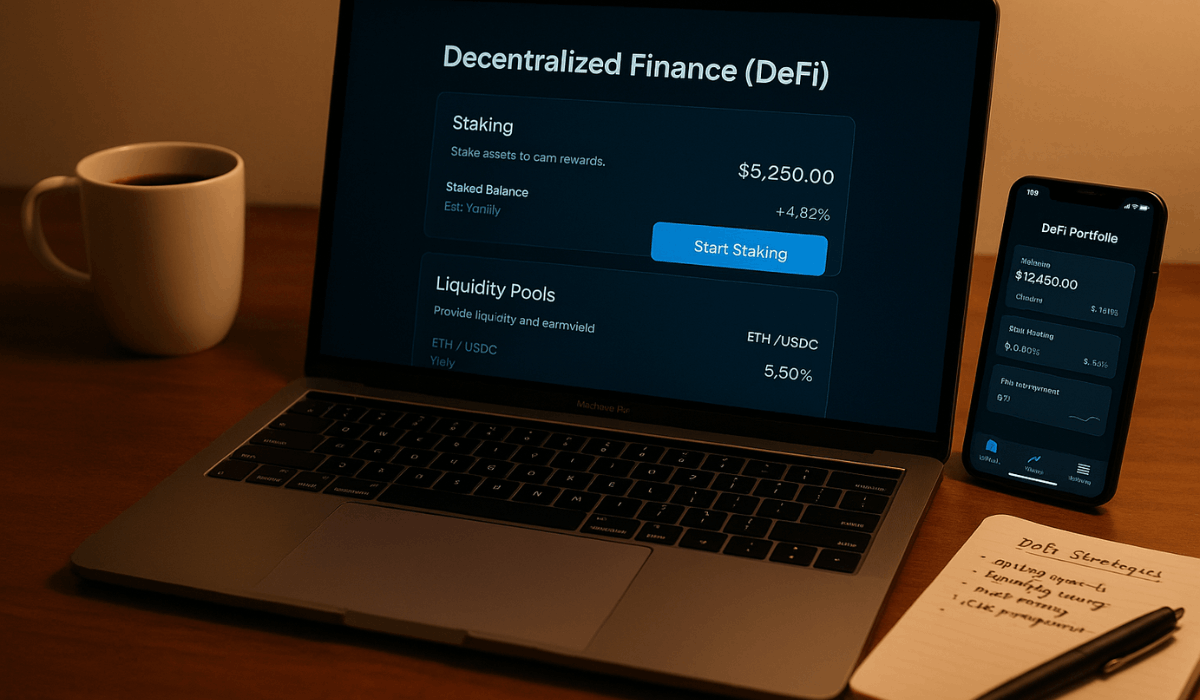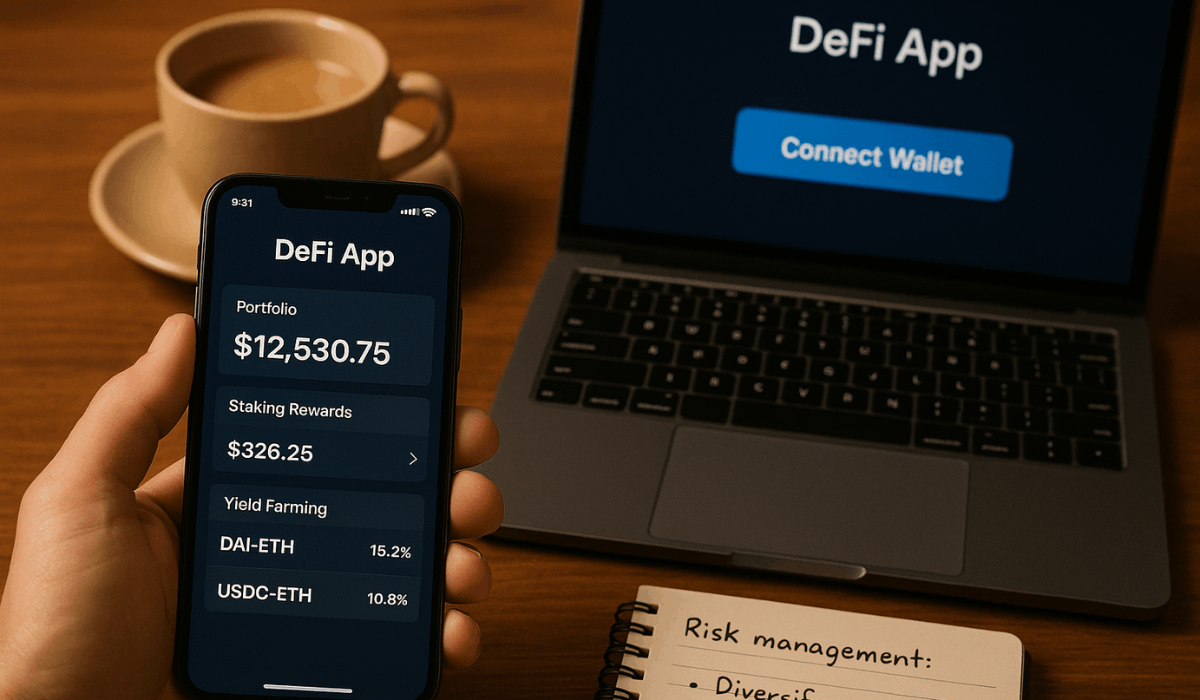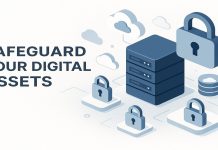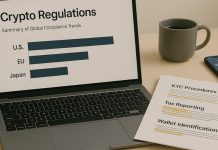Decentralized Finance (DeFi) once promised a revolution in how you access, use, and grow your money, without the need for banks or intermediaries.
Since its explosive rise in 2020, the space has evolved through major wins and painful setbacks.
In this article, you’ll learn whether DeFi still holds value in 2025 and what you should know before getting involved.
What DeFi Promised vs. What It Delivered
DeFi started with bold promises—open access to financial tools, full control of funds, and a new way to earn without banks.
But the reality has been mixed, with both innovation and disappointment along the way.
- Promise: Total Financial Freedom
You were told DeFi would let you manage money without banks, freely and globally.
Reality: High gas fees and complex tools often limited access for regular users.
- Promise: High-Yield Passive Income
Yield farming and liquidity pools promised strong returns.
Reality: Rewards dropped fast, and many users faced impermanent loss or scams.
- Promise: Security Through Code
Smart contracts were seen as trustless and reliable.
Reality: Billions were lost to hacks, bugs, and poorly audited protocols.
- Promise: Open Participation for Everyone
Anyone could lend, borrow, or invest without permission.
Reality: Many protocols struggled with user experience, confusing interfaces, and risk exposure.
- Promise: Rapid Innovation and Growth
DeFi platforms were expected to reshape finance quickly.
Reality: Growth slowed after initial hype, and only a few platforms stayed relevant by adapting.

The Current State of DeFi in 2025
DeFi has undergone significant changes in the past few years. Some platforms survived and improved, while others disappeared.
Here’s what the landscape looks like now:
- Layer 2 networks are leading the way: Platforms like Arbitrum and Optimism help reduce fees and expedite transactions.
- Stablecoins are still essential: USDC, DAI, and newer regulated coins are commonly used in most DeFi apps for stability.
- Real-world assets (RWAs) are entering DeFi: Users can now access tokenized versions of assets such as bonds, real estate, and invoices.
- Top platforms have consolidated: A few reliable names like Aave, Uniswap, and Lido dominate the space.
- DeFi is becoming more compliant: KYC tools and identity checks are being added to meet global regulations.
- User experience is getting better: Wallets and apps are more straightforward, making it easier for beginners to get started.
Benefits of Using DeFi Today
Despite the risks, DeFi continues to offer real advantages in 2025. If you know how to use it safely, you can unlock tools that traditional finance doesn’t provide.
- You control your own money: DeFi is non-custodial, meaning you hold your private keys and assets directly.
- No bank is needed to get started: You just need a wallet and an internet connection—no paperwork or approval is required.
- Earn passive income: You can stake tokens or provide liquidity and earn real-time rewards.
- Access is global and 24/7: DeFi works anytime, anywhere—no borders or banking hours.
- Lower fees with Layer 2 chains: Using networks like Arbitrum and Base cuts costs on trades and transfers.
- Privacy and flexibility: Most platforms don’t require complete identity checks, giving you more privacy.
Key Challenges Holding DeFi Back
Even in 2025, DeFi still faces significant challenges that hinder its growth. These issues affect both new users and experienced ones.
- Security risks are still high: Hacks, rug pulls, and smart contract bugs continue to cause significant losses.
- It’s still hard to use: Many platforms are not beginner-friendly, with complex steps and confusing terms.
- No customer support: If you lose funds or make a mistake, there’s usually no one to help.
- Regulation is uncertain: Governments are cracking down, and some DeFi apps block users in certain regions.
- Fake projects and scams exist: New users often fall for tokens or platforms that vanish overnight.
- Costs can still be unpredictable: Gas fees on busy networks can spike, especially during big market moves.
AI and DeFi: A New Integration Trend
AI is increasingly playing a significant role in how DeFi operates and evolves.
It brings more innovative tools that help users manage risk, automate strategies, and stay informed.
- AI helps manage your DeFi portfolio: Some apps utilize AI to adjust investments based on market trends automatically.
- It improves risk detection: AI models can identify scams, rug pulls, or contract bugs more quickly than humans.
- Trading bots are more advanced: AI-powered bots can now execute trades with better timing and strategy.
- AI enhances security tools: AI audits can scan smart contracts for flaws before they are deployed live.
- It makes DeFi easier to use: Chatbots and AI guides simplify setup, wallet use, and protocol navigation.
- More platforms are incorporating AI features: DeFi apps are now integrating automation and analytics to attract more sophisticated users.

Decentralized Identity (DID) in DeFi
Decentralized Identity (DID) is transforming how users prove their identity in DeFi.
It adds trust without compromising privacy or relinquishing complete control of your data.
- You maintain control over your identity: DID allows you to manage your personal information without sharing it with a central authority.
- Improves access to DeFi services: Verified identities help users access loans, credit scoring, and undercollateralized borrowing.
- Helps platforms meet regulations: DID makes it easier for DeFi apps to follow KYC rules while protecting user privacy.
- Reduces fraud and fake accounts: Unique identities make it more difficult for bots and scammers to exploit systems.
- Used by top projects and networks: Platforms like Polygon ID and Worldcoin are driving the development of DID tools forward.
- Sets the stage for real-world use
- DID can connect DeFi to jobs, education, and social credentials in the future.
Is It Still Worth Using or Investing in DeFi?
You may wonder if DeFi remains a wise choice in 2025. The answer depends on your goals, experience, and the level of risk you can handle.
- Yes, if you want complete control over your money, DeFi lets you manage assets without intermediaries, banks, or restrictions.
- Yes, if you’re looking for new income options, Staking, lending, and liquidity pools can still provide steady returns.
- Yes, if you’re tech-savvy and cautious: Knowing how to check contracts, track risks, and avoid scams helps a lot.
- No, if you’re new and unprepared: Jumping in without learning can lead to fast losses and confusion.
- No, if you need strong legal protections: Unlike banks, DeFi has no guarantees or support if something goes wrong.
- It depends on how much time you’ll invest: The more you learn and stay updated, the more value you can get from DeFi.
Conclusion: Final Thoughts on DeFi in 2025
DeFi is still worth it for those who understand the risks and start small.
If you’re willing to learn and start small, it can be a valuable addition to your financial toolkit.
Take time to research, use trusted platforms, and explore DeFi only with what you can afford to lose.










